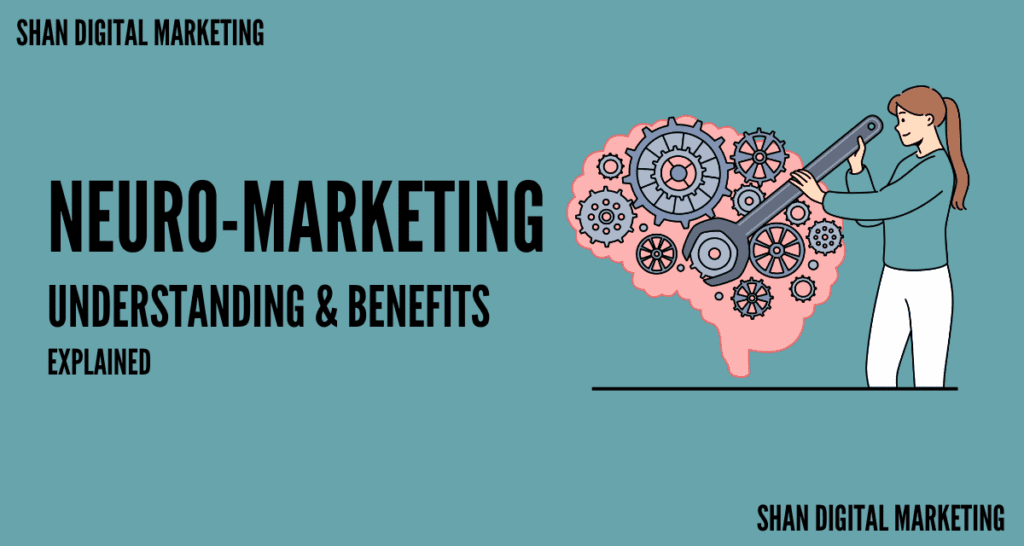Introduction
What is Neuro-Marketing?
Neuromarketing is an innovative field that merges marketing and neuroscience. It aims to understand how consumers’ brains respond to various marketing stimuli, helping predict and influence their behavior and decision-making processes. By leveraging insights from brain activity, companies can tailor their marketing strategies to better align with consumer preferences.
Relevance in Today’s Market
In today’s highly competitive market, understanding consumer behavior is more critical than ever. Traditional marketing methods often rely on surveys and focus groups, which can be biased or inaccurate. Neuromarketing, on the other hand, provides a more objective and direct way to understand consumer preferences by observing brain activity. This scientific approach allows marketers to create more effective campaigns, enhancing engagement and conversion rates.
How Neuro-Marketing Works
Brain Scanning Techniques
One of the primary methods used in neuromarketing is brain scanning. Techniques such as Functional Magnetic Resonance Imaging (fMRI) and Electroencephalography (EEG) are commonly employed. These tools measure brain activity and provide insights into how consumers respond to various stimuli, such as advertisements or product displays.
fMRI: This method measures brain activity by tracking changes in blood flow.It helps identify which areas of the brain are activated during exposure to marketing stimuli.
EEG: This method records electrical activity in the brain. It is particularly useful for understanding immediate responses to marketing materials, such as TV commercials or online ads.
Physiological Tracking
Another crucial method in neuromarketing is physiological tracking. This involves monitoring eye movements, heart rate, and other physiological responses to marketing stimuli. For example, tracking eye movement helps determine which parts of an advertisement capture the most attention, providing valuable insights into visual engagement.
Eye Tracking: This technology measures where and how long a person looks at different parts of a screen. It is essential for optimizing visual elements in advertisements.
Heart Rate Monitoring: Changes in heart rate can indicate emotional responses to marketing content. A faster heart rate might suggest excitement or interest, while a slower rate could indicate relaxation or boredom.
Benefits of Neuro-Marketing
Enhanced Consumer Insights
Neuromarketing offers deeper insights into consumer behavior. By understanding how the brain reacts to different stimuli, marketers can craft more effective campaigns that connect with their target audience.This level of insight is unparalleled compared to traditional methods, allowing for more precise targeting and messaging.
Improved Marketing Strategies
With neuromarketing, businesses can optimize their marketing strategies. For instance, by identifying which elements of an advertisement are most engaging, companies can focus on those aspects to improve their overall effectiveness. This leads to better ROI on marketing efforts and more satisfied customers.
Case Studies Highlighting Success
Several case studies highlight the success of neuromarketing. For example, a retail company used neuromarketing techniques to redesign their store layout, resulting in a significant increase in sales. Another example is a beverage company that utilized brain scanning to test new product packaging, leading to a more appealing design.
Challenges and Ethical Considerations
High Costs and Technical Complexities
Despite its benefits, neuromarketing comes with challenges. The cost of brain scanning and other techniques can be high, making it inaccessible for some businesses. Additionally, the technical complexity of interpreting brain data requires specialized expertise, which can be a barrier for smaller companies.
Ethical Concerns
There are also ethical concerns related to neuromarketing. The idea of using neuroscience to influence consumer behavior raises questions about manipulation and privacy. It’s crucial for companies to use these techniques responsibly and transparently. Ensuring informed consent and maintaining consumer trust are paramount.
Practical Applications of Neuro-Marketing
Retail Sector
In the retail sector, neuromarketing can be used to optimize store layouts, product placements, and promotional strategies. For example, tracking eye movements can help determine the best placement for products on shelves to maximize visibility and sales. Retailers can also use brain data to create more engaging in-store experiences.
Advertising
In advertising, neuromarketing helps create more engaging and effective ads. By understanding which elements capture attention and evoke positive emotional responses, advertisers can design campaigns that resonate more deeply with their audience. This can lead to higher engagement rates and more effective marketing spend.
Product Design
Neuromarketing is also valuable in product design. By testing different design elements and measuring consumer responses, companies can create products that are not only functional but also appealing to their target market. This process can involve everything from packaging design to the development of new product features.
Future Trends in Neuro-Marketing
Advancements in Technology
The future of neuromarketing looks promising, with advancements in technology paving the way for more precise and affordable techniques. For example, portable EEG devices are becoming more accessible, allowing for real-time monitoring of brain activity in natural settings. This can lead to more accurate and actionable insights.
Integration with AI
Integrating neuromarketing with artificial intelligence (AI) is another exciting trend. AI can help analyze vast amounts of brain data, uncovering patterns and insights that would be difficult to detect manually. This integration can enhance the effectiveness of neuromarketing techniques and provide deeper insights into consumer behavior.
Checkout newly launched Apple’s Intelligence Taking Over competitors?: Overview To It’s Features
Conclusion
Summary of Key Points
Neuromarketing offers a powerful way to understand and influence consumer behavior. By leveraging brain scanning and physiological tracking techniques, businesses can gain deeper insights into their customers’ preferences and improve their marketing strategies. However, it’s essential to address the challenges and ethical considerations associated with this field.
The Potential of Neuromarketing
As technology continues to advance, neuromarketing will likely become even more integral to marketing strategies. Companies that embrace this innovative approach will be better positioned to meet the needs of their customers and stay ahead in a competitive market.
Author
-

John, our Website Manager, is the architect behind seamless online experiences. With a keen eye for detail, he ensures your digital space is not only visually stunning but also intuitively functional. From design optimization to user-centric features, John's expertise lies in crafting websites that captivate and convert. Trust him to elevate your online presence to new heights.
View all posts




